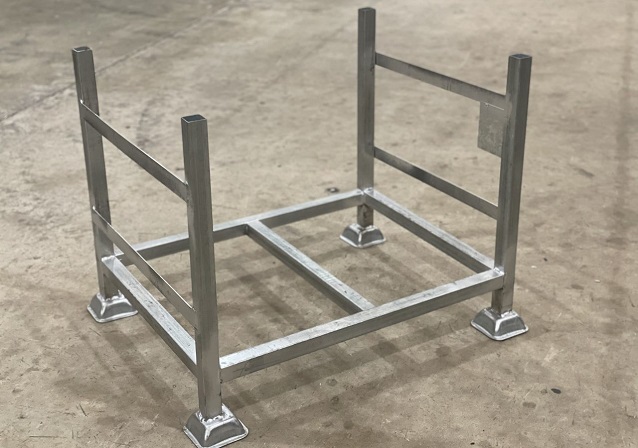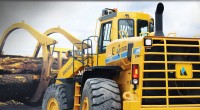Efficient Storage and Transportation: The Uses and Benefits of Stillage Cages
In industrial and warehouse settings, efficient storage and transportation of goods are paramount for smooth work. Whether you want to maximise your warehouse space or you need a reliable transportation solution, you need proper equipment. Stillage cages, also known as pallet cages or mesh cages, are indispensable tools in these environments. They offer a versatile solution for storing, handling, and transporting various items, providing numerous benefits across industries.
Types of Storage Equipment

Depending on the type of your business and specific activities, you could find different varieties of storage solutions useful. Available in more heights and sizes, well-designed and robust stillage cages come in various designs to suit different applications. Some common types include:
- Mesh Storage Cages: These cages feature a mesh construction, usually made of steel wires or rods. The mesh design allows for visibility of the contents and proper airflow, making them suitable for storing items that require ventilation, such as perishable goods or components sensitive to moisture.
- Solid Stillage Cages: Unlike mesh cages, these cages have solid panels made of materials like steel or plastic. These panels provide additional protection and security for the stored items, making them suitable for transporting delicate or valuable goods.
- Collapsible Cages: These cages are designed to fold down when not in use, allowing for compact storage and transportation. Collapsible stillage cages are ideal for businesses with limited storage space or those that require frequent transportation of empty containers.
- Stackable Cages: They’re specifically created to be placed on top of one another, making the most out of the vertical storage area. They often feature interlocking mechanisms or stackable feet to ensure stability when stacked.
- Drum Secure Pallet Systems: These heavy-duty storage systems allow you to easily strap and unstrap drums to keep them in place and prevent shifting while on the pallet.
What Is the Use of a Stillage?
Any company involved in the handling, storage, or transportation of goods requires dependable equipment to ensure safe and productive operations. Stillage cages find applications across various industries due to their versatility and durability.
- Warehousing and Storage: Storing a wide range of goods in warehouses, distribution centres, and manufacturing facilities is a complex process. The cages provide a convenient solution for organizing inventory and optimizing storage space.
- Transportation: Stillages are commonly used for transporting goods within facilities or between different locations. Their robust construction ensures the safe handling and transportation of goods, reducing the risk of damage during transit.
Material Handling: The storage systems are essential for material handling processes such as picking, packing, and sorting. They facilitate efficient movement of goods throughout the supply chain, streamlining operations and improving productivity.
Waste Management: Solid models are often used for collecting and transporting waste materials such as scrap metal, cardboard, or recyclable materials. They help businesses maintain a clean and organized work environment while facilitating proper waste disposal practices.
Retail Display: Some businesses use a stillage for retail display purposes, especially in settings where a rustic or industrial aesthetic is desired. Mesh varieties can be filled with products and placed on the sales floor to create visually appealing displays.
Benefits of Storage Systems

Organising the work environment requires the use of proper equipment. These storage solutions offer several benefits that contribute to increased efficiency, safety, and cost savings in industrial and warehouse operations. Some key benefits include:
- Durable Construction: High-quality cages are typically made of robust materials such as steel, making them durable and long-lasting. This durability ensures reliable performance even in demanding environments, reducing the need for frequent replacements.
- Space Optimization: Collapsible and stackable cages help optimize storage space by allowing for efficient use of vertical and horizontal space. Businesses can store more goods in a smaller footprint, reducing the need for additional storage facilities.
- Improved Organization: Stillage cages help businesses maintain a neat and organized warehouse or workspace by providing designated storage areas for different types of goods. This organization streamlines inventory management and facilitates faster retrieval of items when needed.
- Cost Savings: Investing in these cages can lead to significant cost savings in the long run. By reducing the risk of damage to goods during storage and transportation, businesses can minimise losses associated with product damage and downtime.
- Safety and Security: Solid pallet cages offer enhanced security for valuable or sensitive items, protecting them from theft, tampering, or environmental hazards. Mesh stillage cages provide visibility of the contents, allowing for easy inspection and monitoring of stored goods.
- Versatility: Most cages can be customized or configured to suit specific requirements, making them suitable for a wide range of applications across different industries. Businesses can adapt these tools to accommodate varying load sizes, shapes, and weights.
Finishing Thoughts
Industrial stillage cages play a vital role in modern industrial and warehouse operations, offering a versatile and efficient solution for storing, handling, and transporting goods. From streamlining inventory to workplace safety, these storage solutions offer numerous benefits. With their diverse range of types, uses, and benefits, they continue to be indispensable tools for businesses seeking to optimize their storage and logistics processes.



